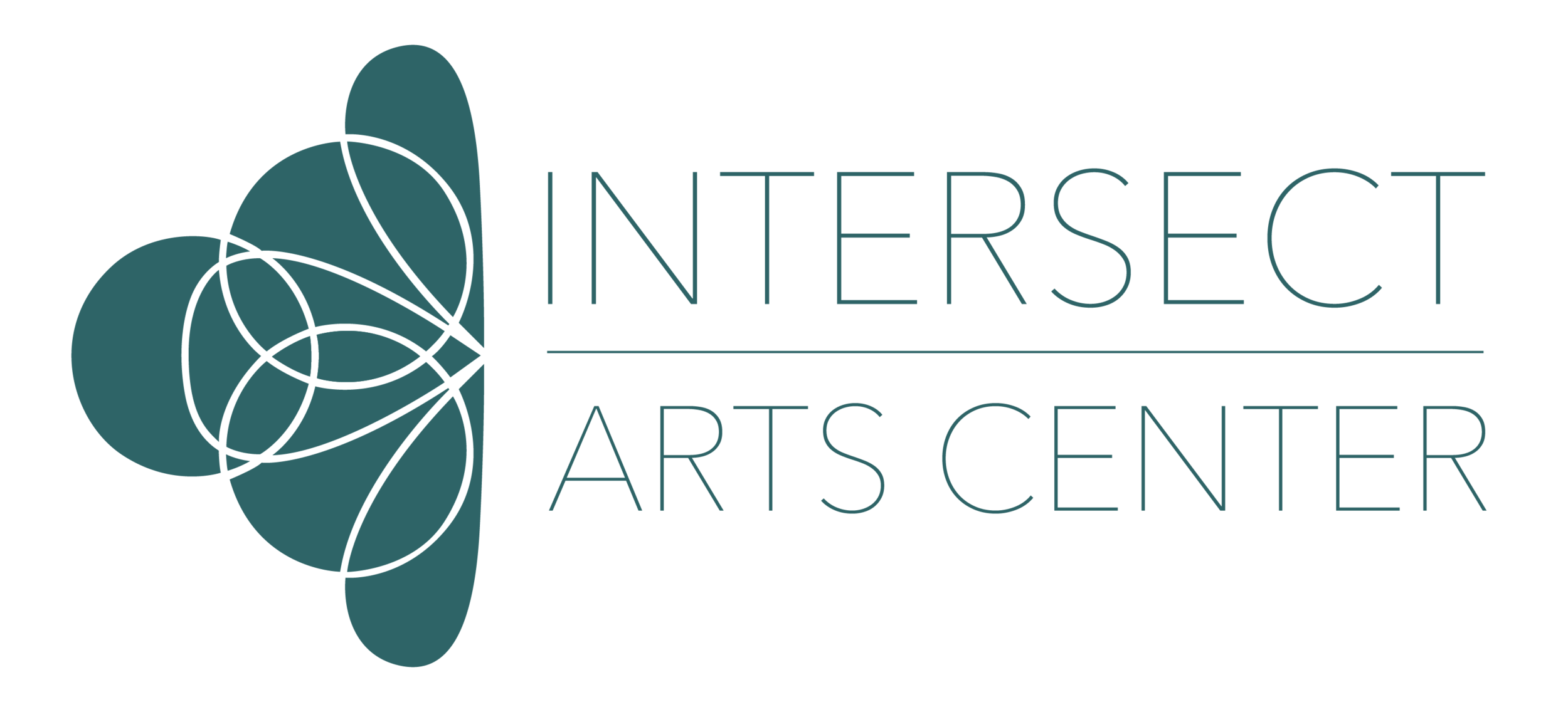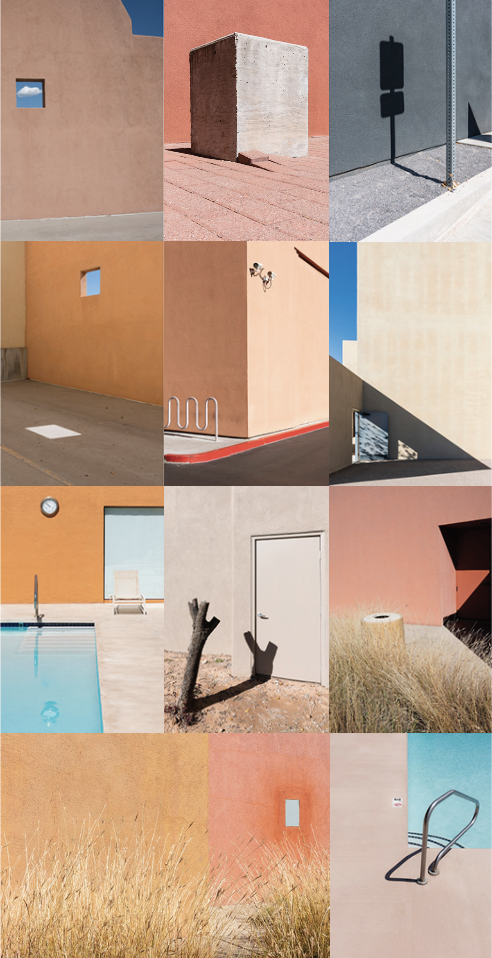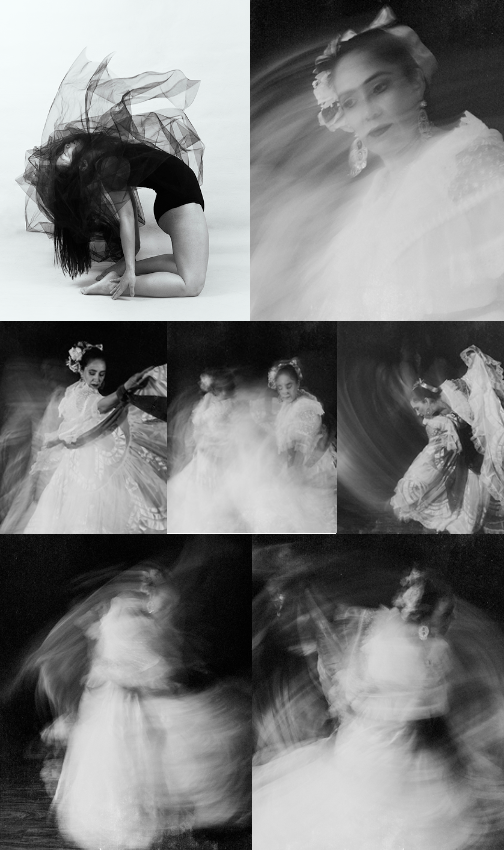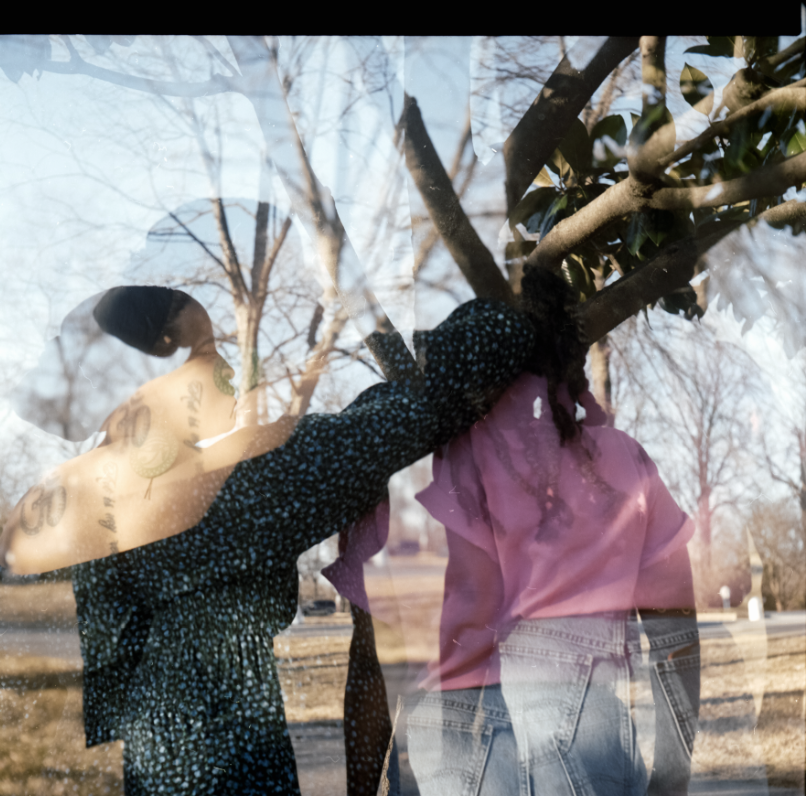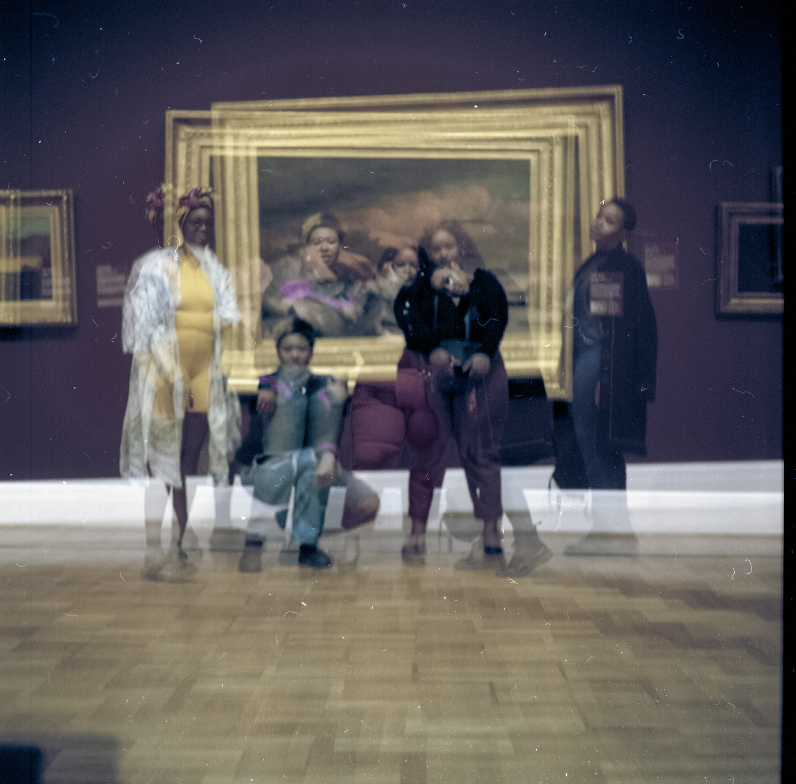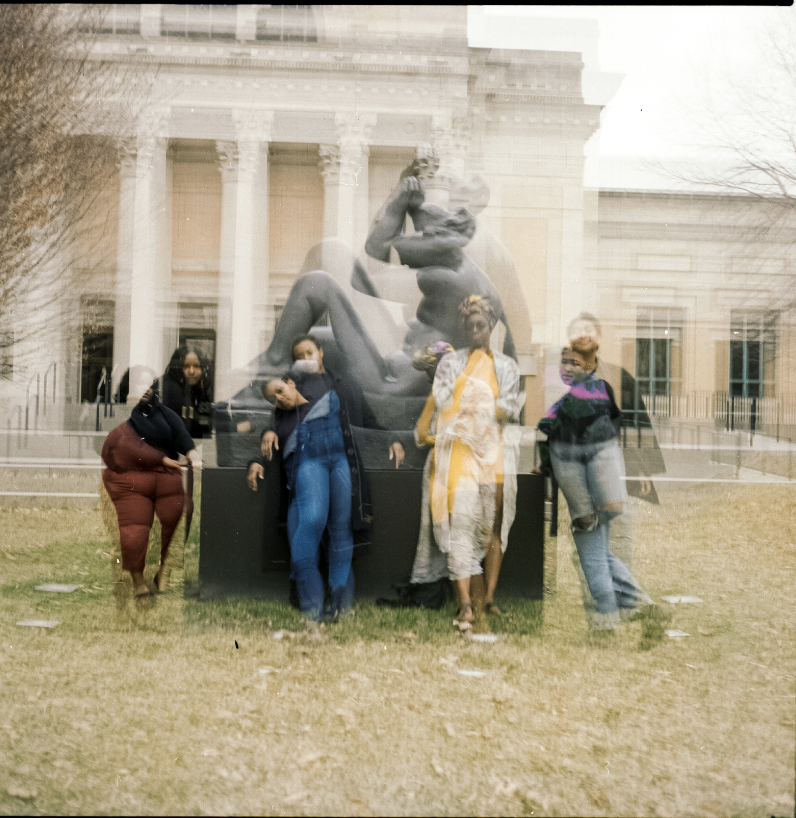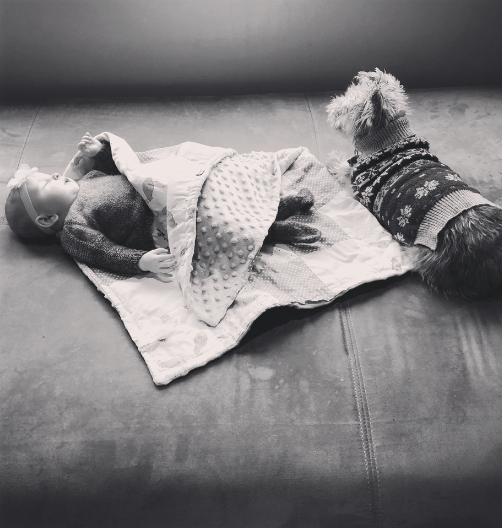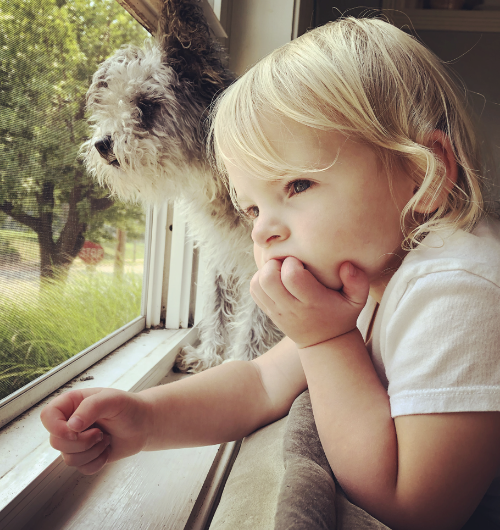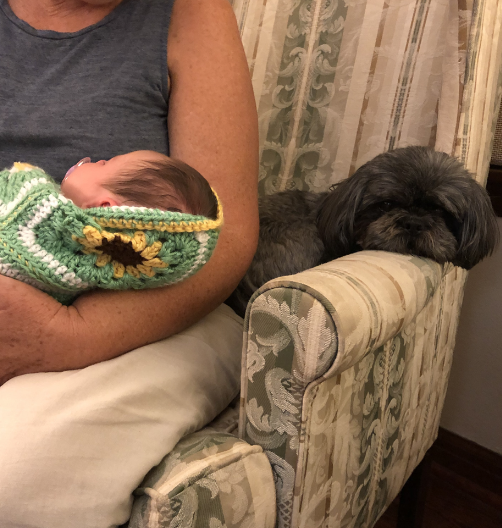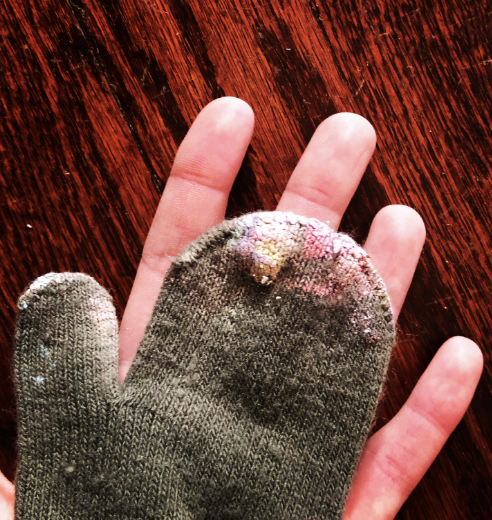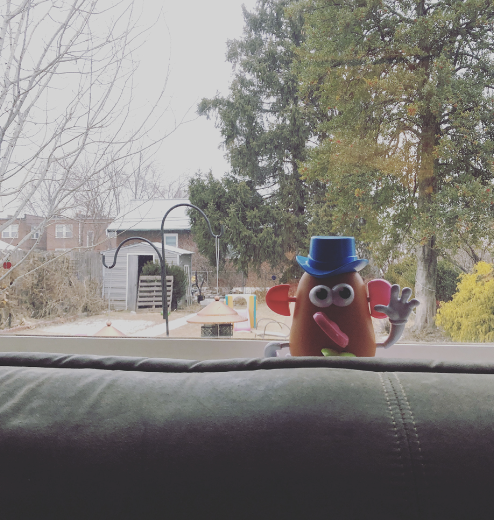FEATURING:
Natalie Christensen, Connie Flores, Carol Lara, Brea Youngblood, Tiffany J. Sutton, Aïda Hasanović, and April Parviz
March 28 - May 22, 2022
Gallery hours : Monday - Friday : Noon - 6PM
Seven remarkable women all pondering the work of “de” and “re” in some way have come together for this exhibition to share the poetry that is this lifelong, generational process of doing and undoing and doing.
Of unlearning and remaking.
Of leaving and becoming.
Of holding cultural histories dear and forming new cultural contexts.
Of building new communities of individual and shared identities.
This exhibition of photographic work is an invitation to ponder the kinds of constructions that compose every aspect of our lives. This artwork is an invitation to wonder at our abilities as humans to deconstruct those things which do not serve us or our communities well, and the even more remarkable tenacity we have to reconstruct new possibilities for our future.
Curated by Sarah Bernhardt
Catalog
Welcome!
Seven remarkable women all pondering the work of “de” and “re” in some way have come together for this exhibition to share the poetry that is this lifelong, generational process of doing and undoing and redoing.
Of unlearning and remaking.
Of leaving and becoming.
Of holding cultural histories dear and forming new cultural contexts.
Of building new communities of individual and shared identities.
This exhibition is an invitation to ponder the kinds of constructions that compose every aspect of our lives. This artwork is an invitation to wonder at our abilities as humans to deconstruct those things which do not serve us or our communities well, and the even more remarkable tenacity we have to then reconstruct new possibilities for our future.
Artist Natalie Christensen offered the title the “deconstructed self” for her series of photographs included in this gallery. The title alludes to her modernist aesthetic approach of “deconstruct[ing an image] to color fields, geometry, and shadow.” Her restrained compositions and minimalist presentation make way for saturated colors that flatten space and feel difficult to grasp in scale and context, leaving us to explore a more psychological kind of space. Christensen writes, “Sometimes I get a glimpse of the sublime in these ordinary places.” And indeed, a heaving sidewalk paver, the curve of a tube-metal bike rack, a red painted curb, a utility exit, and empty window, all appear surreal, even hyper-real, seemingly constructed, “photoshopped” under the magic of that southwestern light and deft artistic eye. While the color and light in these images have a certain sense of exuberance, these spaces exude a feeling of isolation. The kind of solitude that perhaps does not feel melancholy, but resolute. The kind of solitude we feel when we recognize that at the end of the day we are the only one who can occupy our own mind. These surreal (but real) spaces ask questions of the viewer that could be answered in a myriad of imaginative ways in true Derrida-ian form. “What could be around that corner? Through that door? Up there? On the other side? As we think of them as metaphor, they ask us to wonder and hope, and recognize the work of social and emotional deconstruction, that is understanding the implicit frameworks and underlying assumptions within which we operate. Those questions, that work which society has been doing all throughout postmodernity, is an internal one that we must continue to take up within ourselves.
Brea Youngblood’s large installation to the left as you enter the gallery is brimming with images that resonate with Christensen’s in their saturated pigments, surrealist illusions, and focus on the individual’s experience. However, all restraint is surrendered in these buoyant images of release. Christensen’s work asks almost clinical questions that lead the viewer often beyond the confines of the space she has defined in her photograph, whereas Youngblood’s images draw us in, leaving us intoxicated in the textures and ripples and gestures of the “often unattended ‘now’ .’’ Christnesen asks us to enter a psychological space through the use of architectural metaphor, and Youngboold’s work shift’s us into a palpable ritual of embodiment. We feel as if we could occupy the wetness of this water, be swept into the present of this cathartic letting go. A small circular mirror repeatedly appears across the installation, and captures the imagination with its possibility. On the far left the object shines like a brilliant diamond over an otherworldly landscape, a floating beacon like a shimmering celestial body. To the right we see it appearing like a portal of juxtaposing yet harmonious elements, ground and sky, earth and water, the camera’s depth of field playing with our expectations of the “real”. One present reality soft, the small reflection of another reality perspective clearly focused. And finally at the top right we see the small eternal form, mystically reflecting back the image of a true and clear, yet cautiously shrouded self, reminding us that the work of release is both sumptuously beautiful and a tender, formidable process.
Centered in the gallery, Carol Lara’s sweeping yet intimate series of a woman in traditional costume performing the La Bamba from Veracruz, Mexico. The costume’s history is an example of cultural de- and then reconstruction as it was adopted from the colonial Spaniards. Originally black, the dresses eventually changed to white due to the heat in Veracruz.
These images illustrate how dance, like many cultural art forms, has a unique blend of grit and grace, of individual and collective expression. It’s such a wonder that humans create movements and architecture and sounds and garments that construct a universe of meaning. The black and white palette reminisces of a time past, yet as the dancer’s portrait is held fast to the paper, she seems present and pervasive even in this moment, reminding us of the deep collective cultural bones every individual and society’s present is built upon.
Lara’s single image of a young dancer curving backward, black tulle billowing from her chest nods to her work as a commercial photographer. Photography as a form occupies a myriad of constructed identities, from commercial, to fine art, to medical, to scientific, to personal, etc. This show works to gently deconstruct some of those boundaries and reconstruct the ways that we disseminate different “types” of photography and celebrate its multiplicity.
Opposite Lara, Connie Flores’ three images explore a mix of personal and broader cultural expressions. The obvious connections to de/reconstructed self explored in the portrait of the young woman applying make-up at first glance appears to have somber or restrictive undertones with its monochromatic palette, serious expression, stark lighting, and masking tape guides. This image perhaps sparks connections to decades of protest against the expectations of make-up and professionalism, or of unattainable airbrushed beauty standards. However, Flores’ accompanying artist statement explores the delight of cultural and creative expression that women can choose to enjoy as they use make-up to enhance, experiment, and reconstruct their appearance.
The electrifying green of the Mexican sweets shop provides a grounding counterpoint to Christensen’s vacuous environments. Cluttered with neon nostalgia, this place feels real and vivacious and culturally present. Flores’ document of this shop touches on the ways in which even places we visit temporarily, and certainly the foods that we enjoy (whether regularly or occasionally) become building blocks for the construction of our familial and cultural identities.
Finally, the unassuming, yet poignant portrait of the “26” balloons floats against a spacious sky, tethered to something or someone unseen. The evolving, yet still sensitive issue of age for women is evoked by the playful balloons, their glistening pink conjuring the spring of girlhood, yet they ascend into an atmosphere of maturity that feels decontextualized, unknown, even lonely. This image so aptly captures the conundrum of celebrating life’s moments as they continue on against the backdrop of global crisis. It embraces the inherent grief that accompanies deconstruction, whether that be an active undoing of our ancestors’ (or our own) systems, ideologies, habits, buildings, or simply the undoing that comes naturally with loss, of time passing, of aging, of inevitable change. That grief ascends alongside hope into the new constructions we create as an atmosphere to be held, simultaneously, with the joy of new possibilities.
Tucked in the north end of the gallery, Aïda Hasanović’s work reads like a memoir of loss and love. Hasanović crafts images that document the generational aftermath of deconstruction caused by war and displacement. Aesthetically, her work bridges between the modernist spaces of Christensen’s images and the portraits of Lara, Sutton, and Youngblood. Like the birthday balloons, the portrait of three women float against a brilliant and surreal blue sky. Feeling untethered this cluster of women project a sense of displacement, yet the brilliant colors emit a sense of solidity–a saturation of identity. The group find solace in the closeness of their company, even while they each turn to slightly different directions.
The physical spaces Hasanović documents emanate a sense of both familiarity and foreignness. The cobbled together ‘homesteader’ bird house, a basketball courtyard covered with prayer rugs, the stark whitewash of new construction against the backdrop of aging cinder block, a chain link locked tennis court, a figure standing in the borderland of suburbia all feel neither here nor there, yet the evidence of resilience and inhabitation are undeniable. Hasanović so successfully suspends our sense of belonging in these images, we can start to empathize with the challenging and unique experience of reconstructing an identity between places, cultures, homes, that are both worlds apart, and simultaneously internalized by the grief and remarkable tenacity of the refugee experience.
Wrapping around the South side of the gallery are the layered portraits created by Tiff Sutton. Sutton’s multiple exposures create images that have both a feeling of time-based work as the figures blur and multiply in space, while also distilling that multiplicity into a singular still frame, an essence of a moment or person frozen in time and space. Sutton’s portraits remind us of the incredible intricacy that every human being is, and this new series of group portraits points to the complexity we encounter when coming into relationship with one another. The figure’s permeable substance allows the surrounding environments and other women to become a part of one another, seeming to exist in a sort of trans-dimensional or diachronic kind of space. The groups of black women pictured throughout the St. Louis Art Museum appear to become part of the installations, paintings, and sculptures, placing them into the canon of art history. Their strong postures undoubtedly declare their belonging, co-ownership, and participation in such cultural institutions, yet their translucent gazes questions the precarious access and inclusion black women continue to experience.
Finally, bringing us back to the front of the gallery space, April Parviz’s tender collaborative installation fills to the brim a single 8 ft. wall. A collection of personal images sourced from her instagram feed, this work felt like an essential piece of the curatorial arc for this exhibition. As a group of all female photographers organically came into focus for this show, the experience of motherhood, of nurturing one’s own DNA into a new life, seemed a fundamental and essential expression of deconstructing and reconstructing oneself. Parviz images harken to Christensen’s as they include architectural spaces, but Parviz aesthetic inverse of Christensen’s formalism is snippets of the domestic; windows, tables, floors, gardens, and churches filtered through contemporary photographic edits of a very present and ephemeral aesthetic moment. From Christensen’s sleek and flawless prints and frames, Parviz work departs, highlighting the informal tactility of the paper, celebrating a child’s evocative drawing on the walls, clothespin hangers stirring an underlying conversation of what kind of work (and whose) has been traditionally constructed as “professional” and worthy of gallery walls. Christensen self-proclaims the spaces she photographs as banal, and likewise the substance of Parviz images might be considered so, but both artists use the lens to transform the “banal” into spaces of wonder.
Parviz nests the viewer into these intimate moments of daily life and seasons passing, the child’s form often unaware and engrossed in her activities of running, spinning, looking, touching, embracing….allowing us a moment to pause time and reflect on the routine, yet spectacular, ways in which we construct a home, a family, a life. As Annie Dillard so deftly wrote, “How we spend our days is, of course, how we spend our lives”…eating, spinning, looking, loving.
I pray this invitation to look and listen, to delight, and grieve, and to wonder has opened even a small space within you to consider the constructions in the interior of your own psyche, the exterior of your communities, and the larger sphere of social, political and physical constructions that may seem far outside your control. I pray that we can take to heart Dillard’s quote, and that artists like these remarkable women have nurtured us toward reflecting on the ways in which we can build our days to construct more beautiful lives.
Sarah Bernhart
Curator
Window with Cloud
2018 | 31”x 21” | $2750 | Edition 1/6
Archival pigment print on premium luster paper, matte UV laminate, aluminum dibond, white shadow box frame.
Natalie Christensen
In 2014 I moved from the state of Kentucky to New Mexico leaving my lifelong home and my 25-year career as a psychotherapist behind. While it was an exciting moment it was also a time of questioning and reflection.
Like many artists who have come to New Mexico, I was immediately drawn to the distinctive Southwestern light. The beauty of the natural environment is evident to most people; however, my interest was to explore the more banal peripheral landscapes that often go unnoticed by the casual observer. I began by photographing color fields and geometric shapes. I was interested in the way light and shadow could spark complex narratives, and I quickly became aware that these isolated moments in the suburban landscape were rich with metaphor. Closed and open doors, empty parking lots and forgotten swimming pools drew me to a scene; yet it was my reactions to these objects and spaces that elicited interpretation and projection.
As a psychotherapist, I learned the art of asking the question – in many ways these photographs are an extension of that work. The symbols and spaces in my images are an invitation to explore a rich world that is concealed from consciousness. And the scenes are an enticement to contemplate narratives that have no remarkable life or history yet tap into something deeply familiar to our experience; often disturbing, sometimes amusing… unquestionably present.
On Shaky Ground
2017 | 14 ½” x 14 ½” | $1600 | Edition 1/1
Archival pigment print on premium luster paper, matte UV laminate, aluminum dibond, white shadow box cube frame.
Go Deeper
2017 | 13 ¼” x 9 ½” | $1100 | Edition 1/8
Archival pigment print on premium luster paper, matte UV laminate, aluminum dibond, 2 sided white shadow box cube frame.
Stuck between what we have done and what we’re going to do
2019 | 61” x 41” | $4930 | Edition 1/2
Archival pigment print on Italian cotton rag, matte UV laminate, aluminum dibond, white shadow box frame.
Autumn grasses with grey block
2018 | 21” x 41” | $3300 | Edition 1/1
Archival pigment print on premium luster paper, matte UV laminate, aluminum dibond, wall wrapped white shadow box frame.
Two cameras
2017 | 14 ½” x 9 1/2“ | $1090 | Edition 1/8
Archival pigment print on premium luster paper, matte UV laminate, aluminum dibond, 3-sided white shadow box cube frame.
Open Door
2017 | 13 ½” x 13 ½” | $1400 | Edition 1/1
Archival pigment print on premium luster paper, matte UV laminate, aluminum dibond, 2-sided white shadow box cube frame.
I Waited
2018 | 55” x 37” | $4930 | Edition 1/2
Archival pigment print on Italian cotton rag, matte UV laminate, aluminum dibond, white shadow box frame.
Tree shadow and Door
2018 | 26 ½” x 18” | $2180 | Edition 1/6
Archival pigment print on premium luster paper, matte UV laminate, aluminum dibond, 3-sided white shadow box cube frame.
Black Hole
2018 | 26 ½ “ x 25 ½” | $2800 | Edition 1/1
Archival pigment print on premium luster paper, matte UV laminate, aluminum dibond, 3-sided white shadow box cube frame.
Grey Wall with Shadow
2017 | 41” x 27” | $3600 | Edition 1/6
Archival pigment print on premium luster paper, matte UV laminate, aluminum dibond, white shadow box frame.
Sometimes We Collide 1
2021 | $1,750 | Digital photography
Brea Youngblood
“Sometimes we collide” is a series of images taken with a dear friend just minutes after my car was totaled in a collision with a deer in the almost-morning mist.
We were doing healing work together – an embodiment session to make the immaterial manifest in symbol and picture, using photography as a medium to help one truly see oneself.
We are always shaping and rearranging. We are organic matter, always reaching, always becoming. In one sense, we are learning through these transitions, but in another - and I believe truer sense - it is more about remembering, removing the barriers to the truth. The truth of who we are and what the ever-unfolding, though often unattended “now” is.
Richard Powers says “never forget what you were born knowing.”
Sometimes we collide. Sometimes that is required for our remembering to take root, whether gently or no-so-gently settling us into our truest true. And sometimes, the collision makes way for an unruly beauty that we could never have imagined had we not brushed so closely with our almost ending.
Sometimes We Collide 2
2021 | $1,750 | Digital photography
Sometimes We Collide 3
2021 | $700 | Digital photography
Sometimes We Collide 4
2021 | $700 | Digital photography
Sometimes We Collide 5
2021 | $900 | Digital photography
Sometimes We Collide 6
2021 | $700 | Digital photography
Sometimes We Collide 7
2021 | $700 | Digital photography
Sometimes We Collide 8
2021 | $900 | Digital photography
Sometimes We Collide 9
2021 | $1,500 | Digital photography
Untitled
2019 | 11” X 14” | $225 | Photography
Carol Lara
The soulful energy that is created with dance is the essence of what I’ve captured with these images and the viewer should feel their own emotions rumble within as they imagine themselves experiencing the same release.
Untitled
2017 | 8” X 10” | $125 | Photography
Untitled
2017 | 8” X 10” | $125 | Photography
Untitled
2017 | 8” X 10” | $125 | Photography
Untitled
2017 | 8” X 10” | $125 | Photography
Untitled
2017 | 8” X 10” | $125 | Photography
Untitled
2017 | 8” X 10” | $125 | Photography
26
2020 | 12” X 12” | $50 | Photo on mounting board
Connie Flores
26: This photo was taken at the height of national and global unrest; a few months after the start of the COVID-19 pandemic and the murder of George Floyd. My birthday was coming along in July and I was in the process of understanding some new shifts in my life. I was very fortunate to have a small and intimate celebration with my partner and step-son, but in my attempt to embrace the joy of the day, it felt as though I was ignoring another feeling of uncertainty and grief. The contemplative atmosphere in contrast to the bright bubbly balloons normally associated with festiveness helped me visually express a feeling of unsettling uncertainty that many were experiencing as they learned to balance new shifts in their lives as well. Trying to find pockets of peace where we can in a new world.
Dulce Recuerdo
2019 | 27” X 18” | $50 | Photo on mounting board
Dulce Recuerdo: My family and I would go to Mexico often in my early years. We’d go to see my mom’s side of the family in Hidalgo, MX and in my teen/adult years, we’d go see my dad’s side in Puebla, MX a bit more.
My dad was born in a small town called Zacapala, but he and two of his sisters moved to the city of Puebla in their early adult years for school. He said that he and his sisters would come by this shop called “La California” where they sell all types of sweets, but they’d be there to get some flan. So every time we visit family in Puebla, we always stop by. I’m not the biggest flan fan, but they have a lime flavored paleta to die for on a hot day.
I haven’t gotten a chance to visit as often as I’d like as an adult, but this was from my most recent trip in 2018 and thought I’d grab a quick picture of a warm memory to hold on to when I miss Puebla.
Imelda
2016 | 27” X 18” | $50 | Photo on mounting board
Imelda: This is my roommate Imelda. I lived with her and our other roommate when I decided to move off-campus for the first time in college. They were very down to earth, super lively and friendly. Most weekends, they’d spend time getting dressed up to go out and blow off steam from a long week of classes and work. Their style reminded me of my tia’s looks in the 90s with their earth tones and bold lips. But in this picture, I captured her getting ready for a halloween party.
Makeup didn’t feel like something that came naturally to me, and when I’d attempted it, I felt like a payasa (clown). Imelda always lit up a room by being herself and her make up made her shine even brighter. I love this picture of her because it reminds me of how she was always willing to try something new without taking it so seriously and just have fun.
While I don’t wear makeup often, I picked up a couple tricks while I lived with them and I’m glad to say I’ve mastered a mean and sharp eyeliner.
Red Chair
2020 | 20” X 16” | NFS | Inkjet print
Aïda Hasanović
I became a refugee at age five when my family and I, together with 70,000 migrants of the Bosnian Genocide, moved to the middle of America. From the moment we arrived, this vast American space demanded we analyze ourselves against its rules, its beliefs, its creeds. This included reckoning with the privileges of being read as white in America. We became Bosnian-American, grappling with each end of the hyphen in order to fit within this new homeland.
My work surveys the lives of Muslim refugees and immigrants from across the Balkan Diaspora. I contextualize the Bosnian-American relationship to the social, cultural and political identities inside xenophobic culture. I am interested in the construction of synthesized cultural identities as a result of the interplay between shared religious and political history with the effects of forced migration.
I often turn the camera on my family to create subject matter. I employ historical research, memoir interviews and a range of disciplinary perspectives to raise social, political and personal questions: How does sociopolitical trauma affect the way we narrate ourselves? How do unbalanced power relations and privilege affect the social production of space? How do our ideals and visions of democracy engage with our notions of belonging?
My work depicts the confluence of contemporary and traditional values decontextualized from place and time. The image “Red Chair” resides in a newly renovated mosque with features—such as the repeat-patterned carpet—produced to resemble ancient islamic aesthetics. Nearly hidden to the side, a camera mounted to the wall inspects the looker. I am inviting the viewer to consider the continuous re-contextualization of space: is it an American mosque, a foreign mosque in America, or prying WASP American eyes overseeing a mosque? Much like the juxtaposition of the identities around the hyphen, the images express an imaginary landscape of multiculturalism.
Mosque Basketball Hoop
2019 | 8.5” X 12” | NFS | Inkjet print
New Pavement
2019 | 16” X 20” | NFS | Inklet print
Blue Sky
2020 | 20” X 24” | NFS | Inkjet print
Broken Bird House
2019 | 16” X 20” | NFS | Inkjet print
Winter Migration
2019 | 16” X 20” | NFS | Inkjet print
Ripped Net
2020 | 16” X 20” | NFS | Inkjet print
Old Tennis Court
2019 | 16” X 20” | NFS | Inkjet print
Nude I
2022 | 20” X 20” | $250 | Color Photography
Tiffany J. Sutton
Working within the discourse of portraiture, my candid and documentary photography draw in the long tradition of historical figurative painting and historic film processes. Creating multiple exposure within a single photographic frame, my work explores the possibility of multiple meanings, dual perceptions, and limitlessness of the seemingly binary. Drawing repeatedly on Black feminist thought, I capture Black women with poise and naturalness that exudes a sense of soul. My figures occupy traditional studio spaces, neighborhoods, parks, museums, domestic settings etc. and each explore selfhood, personal internal landscape, and the relationships between others and environment.
Park I
2022 | 20” X 20” | $250 | Color Photography
Park II
2022 | 20” X 20” | $250 | Color Photography
Park III
2022 | 20” X 20” | $250 | Color Photography
SLAM I
2022 | 20” X 20” | $250 | Color Photography
SLAM II
2022 | 20” X 20” | $250 | Color Photography
SLAM III
2022 | 20” X 20” | $250 | Color Photography
SLAM V
2022 | 20” X 20” | $250 | Color Photography
SLAM VI
2022 | 20” X 20” | $250 | Color Photography
SLAM VII
2022 | 20” X 20” | $250 | Color Photography
Imperfect was perfect all along
April Parviz
Six years ago, my husband and I moved into our little house in Dogtown and I became a gardener. Gardening quickly began gently and kindly instructing me in the ways of life. It taught me how the world and time moves on, despite my sometimes debilitating perfectionism and constant need for control. In fact, it moves on in beauty, even moreso, growing over and choking out my inner weeds, the weeds that burrow deep into my soul to choke me.
Now my weeds are buried deep beneath the soil to decay productively, as they should.
Gardening taught me that I am capable of learning and holding knowledge in my mind for a longer period than just a year. It taught me that I learn best when I am alone, and then it taught me why.
Two years later I became a mother. I quickly realized how mothering is not much different than gardening. My mother is also a gardener. She planted many seeds in my heart over the years. The more they grow, the more I can see the abundance she has been planting my whole life without my even noticing. In fact, every day, it feels like another seed, planted by my mother long ago, is introduced to the light for the first time, and begins to grow.
Mothering and gardening now, together, hold my two hands all day every day, leading me gently and offering encouragement and confidence to continue learning the ways of this beautiful life.
I now understand that every part of life is not much different than gardening.
Everything needs light to live and to prosper.
What light shines on the little seeds buried in the hearts of my family and me? The light of Jesus Christ. Praise be to God for gardening and mothering and fathering and for light and for wonder and for children and for family and for seeds.
Praise God for these seeds.
Soli Deo gloria.
Here’s my heart, oh take and seal it
2021 | 14” X 17” | NFS | Digital Photography
When we’ve been there ten thousand years
2021 | 21” X 17” | NFS | Digital Photography
A poem to compliment April’s photography
By Emily Harris
We’re suffering from a broken heart
Since seeing a dandelion as the most stunning piece of beauty outside our own ponytail
A lot has happened
We didn’t lay down our dancing because we were tired of dancing.
We did it because there was work to be done, and we were the ones for the job
It was our beautiful sense of responsibility;
our capacity for compassion
We shouldered burden after burden, until we became burdened. We lost our connection to that dandelion and can’t find the beauty in our ponytail.
Both now, are weeds.
We look in the mirror in disgust at what we’ve ‘become’, without seeing the sacrifice, good intention and determined perseverance, that gave us our form
Return to play,
to again recognize beauty
About the Artists
Natalie Christensen
Santa Fe, New Mexico photographer Natalie Christensen’s focus is on banal peripheral settings. Influenced by 25 years as a psychotherapist, her photos favor psychological metaphors. She deconstructs to color fields, geometry and shadow. “Sometimes I get a glimpse of the sublime in these ordinary places.”
Christensen has exhibited in noted museums and galleries in the U.S. and internationally, was a UAE Embassy invitee for a UAE Architecture Delegation tour, has been invited as Artist-in-Residence to Chateau d’Orquevaux, France and a photobook, “007 – Natalie Christensen,” has recently been published by Setanta Books, London. She has guest lectured at the Royal College of Art and led photography workshops at The Royal Photographic Society, London and Meow Wolf, Santa Fe.
Christensen is the recipient of several prestigious photography awards, has work in permanent collections and publications include The Guardian, Creative Boom, The British Journal of Photography, Musee Magazine, Art Reveal Magazine and Aesthetica Magazine.
Website: www.nataliechristensenphoto.com
Instagram: @natalie_santafe
Aïda Hasanović
Aïda Hasanović is a Bosnian-American artist and writer currently based in St. Louis, MO. Her work explores how different issues of memory and migration interact in the re-construction of a synthesized cultural identity. Her practice weaves from working in photography, bookmaking and video. Aïda’s recent work and research investigates how sociopolitical trauma and historical circumstances affect our notions of belonging. Hasanović’s work has been exhibited locally and nationally including the Contemporary Art Museum in St. Louis, SRLBX in Columbia and Cherry Gallery in Richmond, VA.
Website: www.aidahasanovic.com
Instagram: aida_hasanovic_
Tiffany J. Sutton
Photographer Tiffany J. Sutton was born in 1981 in Rochester, NY, and was raised in suburban St. Louis, MO. She began documenting family and friends after receiving a Kodak camera as a Christmas gift in the early 1990s. While primarily a self-taught photographer, she also attended classes at Washington University in St. Louis and St. Louis Community College. Sutton has decided to work with black women exclusively, as a way to reconnect with herself and discuss social movements. Sutton works with digital, film, and instant cameras.
Website: www.tiffjtiffsutton.com
Instagram: @tiffanyjoy1955
Carol Lara
Carol Lara is an award winning artist whose self-described style of “Grace and Grit” is exemplified through her fine art portraiture. Creating intimate portraits, bringing forth each subject’s authenticity is where she shines. Her subjects describe it best, saying her work leaves them feeling “speechless, yet liberated”.
Website: www.carollara.com
Instagram: @carollaraphotography
Facebook: www.facebook.com/carollaraphotography
Connie Flores
Connie Flores is a visual and UX designer born and raised in Houston, TX. She completed her BFA in Communications Design at Syracuse University and is currently based in St. Louis. Outside of design, Connie explores the idea of reflection, memories, and motivation using photography, illustration, and content creation.
Website: www.ConnieFlores.com
Instagram: @konacan
Brea Youngblood
Brea Youngblood is an artist, mystic, nature lover and mother. Her practice includes poetry, photography, voice and ritual creation, healing work, and bringing into being many projects and organizations. She grew up in a rural area and was homeschooled from the age of six, allowing her to lean into her eccentricities and deep spiritual practice. Her most regular collaborators are her son, the trees, the sky and whatever is blooming around her. She believes that art is more about a way of living than an object one creates.
Instagram: @breayoungblood
Emily Harris
I CREATE comfortable, washable skirts that allow women to transition through their many roles, as I transition through my roles of mother, wife and entrepreneur. My original patterns are drawn by hand. My fabrics are sourced responsibly. My skirts are sewn in my home studio. I CHALLENGE traditional fashion culture, and encourage women to discover and protect the truest version of themselves… By constructing wardrobes thoughtfully and responsibly over a long period of time, by dressing in ways appropriate to their roles to increase productivity and by working through image insecurities as a method of facing larger self-esteem issues.
Website: www.MrsEmily.com
April Parviz
April is an on-again off-again sort of artist. The way a lot of artists seem to be. It looks like for now she may be on-again. She’s hoping to stay on for a while. But it’s hard when you’re a mother. It’s hard to pursue your own dreams and desires. Or at least we tell ourselves it’s hard. But if we stop telling ourselves that, we might open our eyes and see that we are in fact pursuing our own dreams and desires, we just didn’t recognize them. So… it seems April just is an artist. And you probably are too.
Website: www.AprilParviz.art
Instagram: @AprilParviz
About the curator:
Sarah Bernhardt is a St. Louis based artist, educator, curator, and administrator. She received her MFA from Washington University in St. Louis and taught at University of Missouri St. Louis, and St. Louis University. Bernhardt is the founder and executive director at Intersect Arts Center, an arts space dedicated to increasing accessibility to the arts and nurturing opportunities for people to care for one another across diverse communities.
Website: www.SarahBernhardtArt.com
